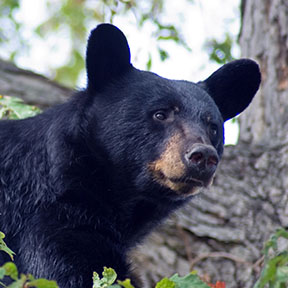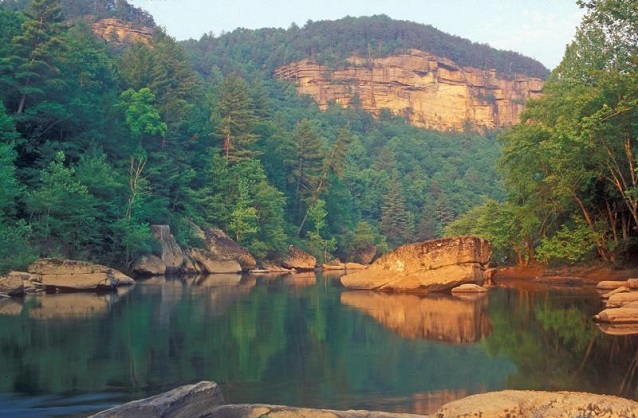Thomas Fraser
Knox County commish subdivides Hardin Valley despite opposition. Again.
WATE: Knox County Commission greenlights more Hardin Vally development
Knox County Commission approved yet another expansive subdivision in the rapidly developing Hardin Valley area despite pleas from area residents to pause and take a deep breath as residential and commercial development outstrips and overwhelms first responders, streets, roads and schools and other infrastructure — and any pretense of responsible suburban planning and zoning.
The decision comes on the heels of similar land-use fights (such as those reported by Hellbender Press) originated by citizens as housing shortages mean such disputes aren’t likely to go away anytime soon.
“Look at all the development projects instead of each one individually. Look at all the projects in the pipeline, not just the few hundred that are on the books right now,” said Knox County Planning Alliance consulting engineer Lee Muller, according to WATE reporting. “There’s like 4,500 in the pipeline in some stage of approval or construction in the county right now. They need to look at all that and what that requires in terms of schools, sewer, police, fire stations,” Muller told WATE.
(Correction 26 Jan. 2022: During the meeting Muller said 2021 ended with 4,499 homes under construction in the county, not the country. After reported by Hellbender Press, this transcription error was corrected on the WATE site too.)
Outgoing Smokies forester Kristine Johnson leaves behind a legacy of science and communication
 Appalachian Voices
Appalachian Voices
Citizen Times: Smokies forester bids adieu to her arboreal home
Good read here from the Asheville newspaper about the retirement of Great Smoky Mountains National Park Supervisory Forester Kristine Johnson.
In her three decades at the Smokies, she has tackled issues ranging from exotic and invasive plants to the slow and disastrous demise of the park’s hemlocks due to the hemlock wooly adelgid.
“‘The work we do includes forest health in all aspects,’ said Johnson, who is retiring this month after more than 30 years in the Smokies,” Frances Ligart reported. “Her career has been devoted to reducing the introduction into the park of exotic plants, insects, and diseases.”
As millions flee to nature, Smokies visitation posts another record
 Hellbender Press
Hellbender Press
Park sets visitation record with 14.1 million visits in 2021
Some 14 million people visited Great Smoky Mountains National Park last year, as Americans and foreign tourists continued their flight to nature in the face of the Covid pandemic.
Here’s the news release from the National Park Service:
“Great Smoky Mountains National Park experienced the busiest year on record with 14,137,812 visits. Visitation exceeded the 2019 record by 1.5 million visits and 2020 visitation by more than 2 million visits. The park has increasingly become a year-round destination with eight monthly visitation records set during winter and spring months in 2021.”
Mountain bears in crosshairs of NC sanctuary management plan
 North Carolina Wildlife Resources Commission
North Carolina Wildlife Resources Commission
Smoky Mountain News: WNC bear-management plan raises some hackles
State wildlife officials in North Carolina are proposing a rule change that would allow hunters to kill black bears in areas that are currently off-limits to “harvesting” of the animals.
The North Carolina Wildlife Resources Commission cites the population boom of the bruins in its consideration of opening up permit hunting in sanctuaries such as Panthertown, Standing Indian and Pisgah.
The proposal is among changes to state wildlife law suggested by the commission for 2022-2023 hunting seasons.
“Allowing hunting in additional sanctuaries will help control the growing population as increased human development reduces hunter access outside the sanctuaries, the Wildlife Commission says, and it will also cut down on human-bear conflicts in those areas,” according to reporting from Holly Kays of Smoky Mountain News.
An outline and rationale for the bear sanctuary hunting rule is available on the North Carolina Wildlife Resource Commission website.
Big South Fork closes 60-acre donut hole
 National Park Service
National Park Service
Land conservancy and estate of long-ago German immigrant expands protection of North White Oak Creek
Big South Fork National River and Recreation Area has grown inward by 60 acres.
The National Park Service announced this week that it officially acquired the donated acreage along North White Oak Creek within Big South Fork. It had previously been in private ownership.
The Allardt Land Company and the estate of Bruno Gernt (a remarkable individual in his own right) originally donated the approximately 60 acres within the boundaries of Big South Fork to TennGreen Land Conservancy. In December 2021, TennGreen transferred the property to the National Park Service.
“This tract provides essential protection for the south side of North White Oak Creek, a popular area in the southwest portion of the (125,000-acre park that straddles the Tennessee and Kentucky state lines in the Cumberlands).
“Park visitors will now forever be able to enjoy peaceful views across the creek of an oak-hickory and northern hardwood forest canopy,” Superintendent Niki Stephanie Nicholas said in a press release.
“We truly appreciate the Allardt Land Company, Estate of Bruno Gernt, and TennGreen for their generosity.”
Amorous salamanders heat up the Southern winter
 Rob Hunter/Hellbender Press
Rob Hunter/Hellbender Press
Knox News: Winter a key time in salamander reproductive calendar
The woods, fields, rivers, creeks and wetlands of Southern Appalachia aren’t as barren as one would think in the midst of winter.
News Sentinel science reporter Vincent Gabrielle gives a solid rundown of why some of our amphibious denizens, including hellbenders, put themselves out there when so many other Appalachian critters retreat to burrows, dens and nests when the snow begins to blow.
“There are more salamander species that call the Southern Appalachians home than any other place on Earth. There are 30 salamander species present in Great Smoky Mountains National Park. Out of the 550 known salamander species on the planet, 77 live here in our backyards. Their bright colors make them the living jewels of Appalachia,” Gabrielle reports.
Walker Sisters off-limits for now
Great Smoky Mountains National Park closed the Walker Sisters Cabin because of safety concerns including a shifting chimney.
The cabin is now inaccessible, but visitors can still explore the homestead and outbuildings as work proceeds to analyze and fix the landmark Smokies dwelling.
Restoration work will be funded by Friends of the Smokies.
Per the National Park Service:
“The cabin dates back to the 1800s and was occupied by the Walker Sisters until 1964. Park crews are concerned about recent movement around the chimney in the two-story cabin. Noticeable cracks and buckling around the stone masonry need to be repaired and stabilized to prevent further movement. The cabin is now closed to all use.
“Cabin renovations, including roof replacement, are planned for the 2022 field season. The Friends of the Smokies have provided funding for this critical work as part of the Forever Places campaign to protect and preserve the park’s historical resources. The historic farmstead, including additional outbuildings, will remain accessible during the cabin closure. Visitors may reach the area by hiking approximately 1.4 miles along the Little Brier Gap Trail located near the Metcalf Bottoms Picnic Area.”
For more information about the Walker Sisters, please visit https://www.nps.gov/grsm/learn/historyculture/walker-sisters.htm.
SACE works to keep us all warm this winter
This is a submission from the Southern Alliance for Clean Energy.
After public advocacy from Knoxville community members, the KUB board passed a resolution that will deliver $5 million for emergency bill assistance to benefit those most in need, and an additional $1 million for weatherization to improve the comfort of people’s homes while lowering their bills by increasing energy efficiency. These funds are part of a pandemic relief credit from TVA.
KUB staff proposed a resolution in October that would have allocated $1.3 million of the total $7.3 million TVA pandemic recovery credit toward payment of debt owed by KUB customers, and the remaining $6 million would be distributed as a monthly bill credit for all residential and small business KUB customers. This would have resulted in an average savings of $17 over 12 months, or about $1.40 per month for all KUB customers, regardless of their level of need for pandemic relief.
Knoxville Water and Energy for All (KWEA), a coalition which SACE is a part of, circulated a petition asking that KUB instead forgive all debt owed by KUB customers, and then use the remaining funds to assist households who were struggling to pay their KUB bills. KWEA delivered nearly 200 petition signatures, and the KUB board asked that the resolution be amended.
As a result of our coalition’s advocacy, the KUB board allocated not only the originally proposed $1.3 million for debt relief, but also the remaining $6 million for customers in need.
While KUB did not pledge to forgive all debt, this is certainly a major win for the community.
The KUB Board’s decision to reallocate funds demonstrates the power of our community speaking up to advocate for ourselves and our neighbors.
Lunker sturgeon are out there again: report your catch to receive a certificate
Email sturgeon.reports (at) tn.gov an image of your catch-and-release with the date, location and your name to obtain your official certificate! This email address is being protected from spambots. You need JavaScript enabled to view it.
WBIR: Holston River sturgeon surging
The population of lake sturgeon, a survivor since the Cretaceous Era that barely escaped the ravages of modern dams and reservoirs, is on the upswing in the Holston River and other branches and tributaries of the Tennessee River system. The last record of the fish in the valley before restoration efforts began is about 1960, according to WBIR.
Significantly older fish were identified during a recent inventory of sturgeon, giving hope that some fish were closing in on reproductive maturity. The gradual recovery is largely the result of Tennessee Wildlife Resources Agency and Tennessee Valley Authority restoration efforts, WBIR reports.
“It makes our valley richer; that fish is supposed to be here,” one researcher told WBIR about the significance of the so-far successful restoration of native sturgeon habitats.
Aerosols and atoms: ORNL supercomputer models airborne spread of Covid-19

New York Times: Oak Ridge supercomputer simulates spread of Covid-19 in water droplets
Scientists studying the spread of the novel coronavirus utilized the world’s second-fastest computer at Oak Ridge National Laboratory to model the movements of millions of individual atoms that make up the virus and aerosols that can transport and transmit it.
The virus has killed nearly 1 million Americans and infected more than 50 million since a pandemic was declared in early 2020.
“The researchers started by creating a model of the coronavirus, known as SARS-CoV-2, from 300 million virtual atoms,” the New York Times reported.
Researchers then placed the virtual virus model in an intricately detailed and microscopic model of a water droplet such as the type exhaled by those infected with the virus. The supercomputer then calculated how the droplet and its attendant virus could, for example, move within a room where people are in close quarters and exhaling and inhaling the virus.
To carry out this vast set of calculations, the researchers had to take over the Summit Supercomputer, the second most powerful supercomputer in the world.